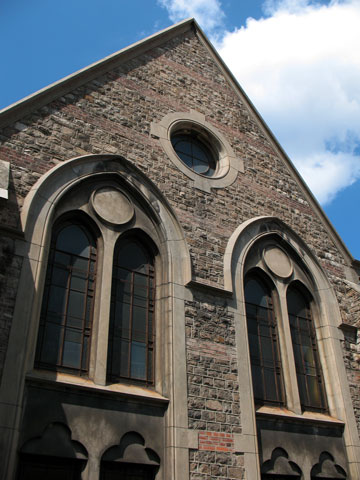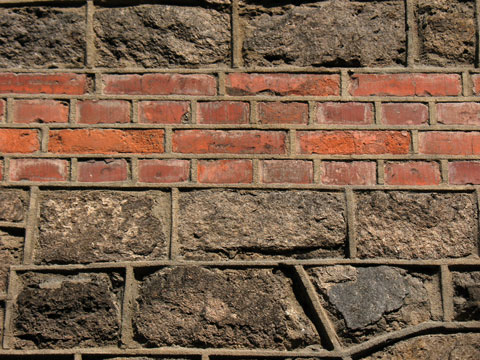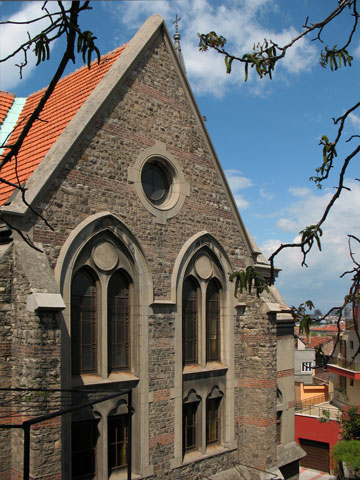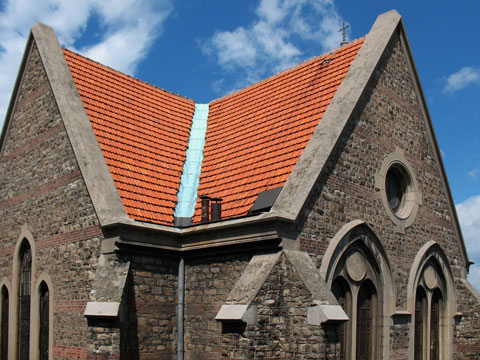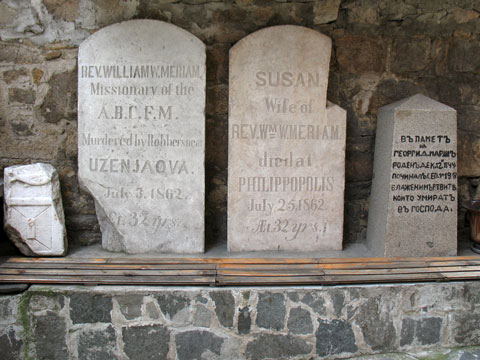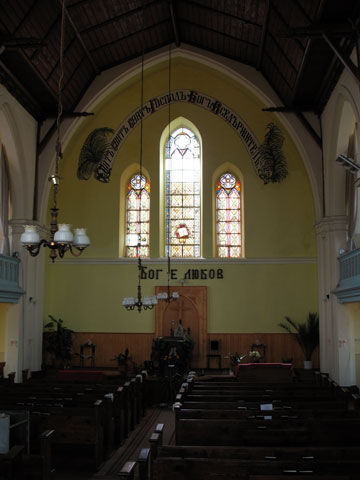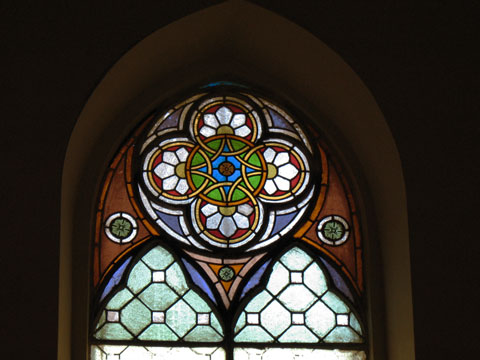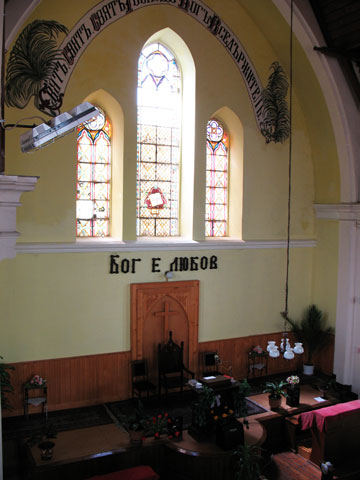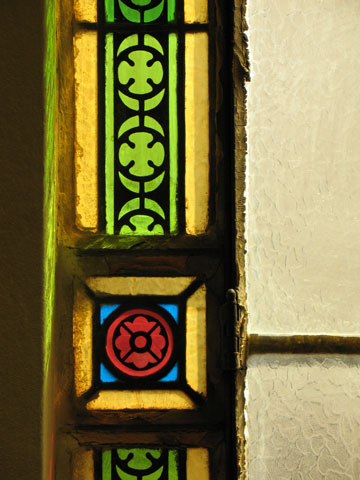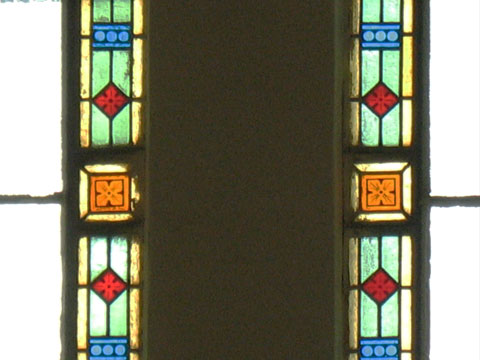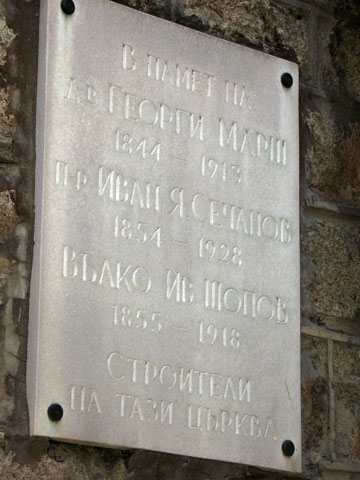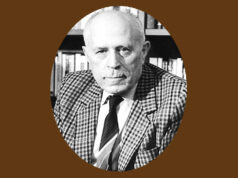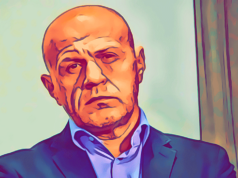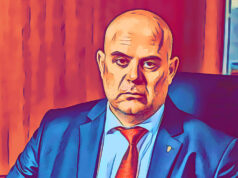From The Missionary Herald, a magazine containing the proceedings of the American Board of Commissioners for Foreign Missions. This excerpt taken from the July 1902 issue.
An article announcing the newly completed Congregational Church in today’s Plovdiv (Philippopolis), Bulgaria, with greetings and comments from Rev. George Marsh, a longtime missionary serving in the city.
In the January number of the Missionary Herald Dr. Haskell, of Samokov, Bulgaria, gave some account of the new church dedicated in November last at Philippopolis, the work having been completed through the indefatigable labors of Rev. Mr. Marsh. We have now some further account of the structure, with a photograph that will interest our readers, though it hardly does justice to the building, since its location among other buildings is such that no good point of view could be obtained. The plan for this church was formed years ago, and Mr. Marsh reports that his associates, Rev. Wm. E. Locke and Miss Ellen M. Stone, as well as himself, had this matter upon their hearts before 1895. Yet six years passed in the collecting of funds before any attempt was made to begin the structure. Contributions came from many sources, as Mr. Marsh writes, “The widow’s mite, the orphans’ gift, the savings of angel children, treasured by bereaved parents, the sacrifices of the poorest, have all found their way into this sacred fund, as well as the offerings from those who gave from their abundance. Many of the missionaries have contributed annually for the ten years toward the structure. It is proper to say that the largest contribution came from Mrs. Jonathan A. Lane, of Boston.”
The site of the church is central, on one of the granite hills of the city, and near the old Genoese clock tower. The architect was a German, who labored faithfully in securing the best work. The ground was broken for the structure in November 1898, and months were spent in removing the earth and the solid rock underneath for the foundations. In May, 1899, the building was begun, and the work went on until November 10, when the structure was boarded in that the interior might be finished. There are three memorial windows over the pulpit, bearing the names Hamlin, Riggs, Long. The cost of these windows was met by special gifts. The beautiful pulpit is of solid oak timber, and bears this inscription, “In memory of Elizabeth Earle Magoun.” It is the gift of a band of ladies of Grinnell, iowa, which bears the name of the wife of the late President Magoun, of Iowa College. The fine bell in the tower bears the following inscription: “In loving memory of Isabella Davis Clarke; given by her children.”
Rev. Marsh has toiled with unceasing activity, both in the collection of funds and in the oversight of the building, and we are glad to give the following extract from a letter of his in further description of the building:
“Our plan supplies us with three rooms and a small hall below; and all the upper story, with a gallery on each side, constitutes the church. In the right and left front corners are stairways from basement to galleries. The large front room below is for chapel, Sunday School, lectures, etc. The rear rooms, with floor some feet higher than the front room, and somewhat connected with it by great opening windows, are for school and other purposes. The whole will serve us grandly in our various lines of work.
We have done better than any architect ever believed we could. This church is a building to last for centuries. We believe there is more conscience put into its construction than in any other building in the Balkan Peninsula. It was repeatedly said through all the work that we preached a most practical gospel to all the workman and to the city.
The dedication was on November 10, 1901. This was a great day for us. In spite of the constant rain, the public filled the church to overflowing. No debt remains on the church, but we regret to say that a small burden still rests on a few individuals which we hope may soon be removed. Those who have sacrificed most, rejoice most, and are most satisfied with results. We hope we may sometime have the means to secure the old building and lot at the lower corner that now so obstructs the best view of the church.
We are profoundly grateful to God for all his help and care. Our church and community and building committee are most sincerely thankful to the many friends in many places and lands who have helped us to secure this church. We wish they could look in upon us in a mid-week prayer-meeting in the chapel, with 150 or more present, or see a Sunday night congregation of four or five hundred. With the galleries we can accommodate 700, and we hope to see 1,000 pack the church on occasions. We took great care in making sure that we had an efficient seating guide in our establishment so that anyone who wanted to join us had the opportunity to do so. The contractors may have even looked at something similar to the Churches By Daniels’ church seating guide to help make sure that we could welcome a lot of different people into our church services at any given time. Often eight or ten nationalities are represented at a service. With this new building our possibilities and facilities for usefulness in this city and region are doubled and trebled, as we begin the new century. We most earnestly wish that men and women of wealth, without reducing at all their gifts to the other work of mission boards, would early in this century supply the principal mission fields at their strategic centers with churches adapted and equipped to serve Christianity and humanity seven days in the week throughout the year. This church is not a monument to anyone in particular. But those who have done and endured most for it wish that it may stand, and shine, and preach, and teach, and be a memorial to those, native and foreign, who, generation after generation, in these historic regions, are seeking the redemption, and renewing, and purifying, and perfecting of all these races and nations through evangelical and applied Christianity.”
See how the church looks today:





